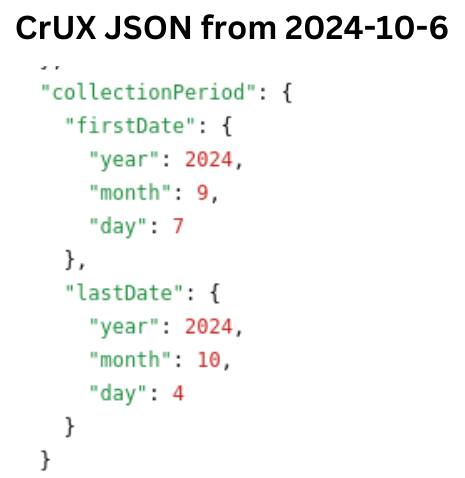Why the Core Web Vitals 28 day delay is a myth
Understand what Google really means when they say that the Core Web Vitals data is 28 days delayed

Debunking the Core Web Vitals 28-Day Delay Myth
The notion that Core Web Vitals data experiences a 28-day delay is a common misconception in the web development community. This belief has led to statements like "We can't see changes for another 28 days" or "Let's hope it works; we'll know in 28 days." However, this perception is inaccurate and based on a misunderstanding of how the Chrome User Experience Report (CrUX) data is processed and presented.
The Reality of CrUX Data!
Contrary to popular belief, CrUX data is not subject to a 28-day delay. In fact, the data is remarkably current, typically only about two days old. This can be verified by querying the Google CrUX API, which clearly demonstrates the recency of the data!

Understanding the 28-Day Window
The confusion arises from the way Google presents Core Web Vitals data. What users are actually seeing is the 75th percentile value calculated over the last 28 days. This statistical approach is designed to provide a more stable and representative measure of a website's performance over time, rather than reflecting short-term fluctuations.
Why It Seems Like There's a Delay
The use of a 28-day rolling window for calculating the 75th percentile can create the illusion of a delay in seeing improvements. Here's why:
- Gradual Data Replacement: Initially, this new data is mixed with older, potentially poorer performance data. Every days data is added to the 28 performance window and one day of the oldest data is being removed. It will take a full 28 days for all the data to be replaced.
- Percentile Calculation: As the 75th percentile is used, it takes time for enough improved data points to shift this metric significantly. This may seem counter intuitive but you cannot think about percentile scores the same way as you would think about averages. Bottom line is that the 75th percentile can be 'resistant to change' when it comes to sudden fluctuations.
Think of it like this: You have a box of 28 red marbles. Every day you take out one old, red marble and replace it with a new green marble. It will take a full 28 days to fully refresh the entire box but there never was any delay!
How quickly the jar becomes mostly green (the 75th percentile) depends on how many red marbles are already in it. If there are many red marbles, it will take longer to turn green. But if there are fewer red marbles, the jar will turn green more quickly.
Implications for Web Developers
Understanding this mechanism has important implications for web developers and site owners:
- Continuous Monitoring: Rather than waiting 28 days to see results, monitor your Core Web Vitals regularly, preferably with RUM tracking that can calculate the 75th percentile on a daily interval.
- Incremental Improvements: Even small improvements can contribute to gradually shifting the 75th percentile over time.
- Patience and Persistence: While you might not see immediate dramatic changes in reported metrics, consistent improvements will eventually be reflected.
Need your site lightning fast?
Join 500+ sites that now load faster and excel in Core Web Vitals.
- Fast on 1 or 2 sprints.
- 17+ years experience & over 500 fast sites
- Get fast and stay fast!

